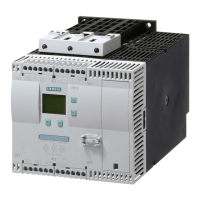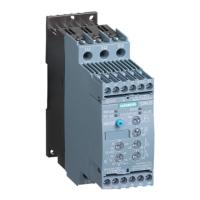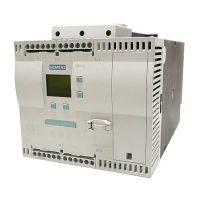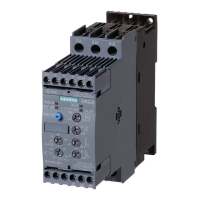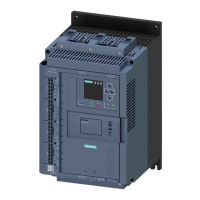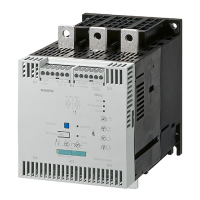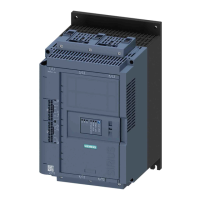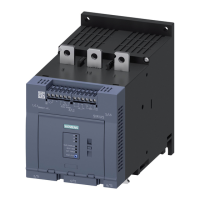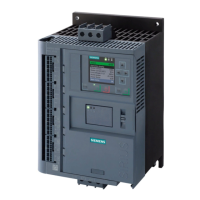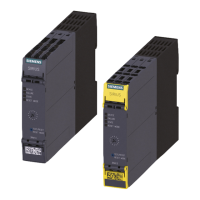Product description
3.2 Functional principle of the SIRIUS 3RW30 and 3RW40 soft starters
SIRIUS 3RW30 / 3RW40
Manual, 10/2018, NEB535199502000/RS-AB/005
27
The SIRIUS 3RW30 and 3RW40 soft starters are two-phase controlled soft starters, in other
words they are designed with two antiparallel thyristors in each of phases L1 and L3. Phase
2 is an uncontrolled phase, which is merely guided through the starter by a copper
connection.
In a two-phase controlled soft starter, the current that results from the superimposition of the
two controlled phases flows in the uncontrolled phase. The main advantages of two-phase
control include the more compact size compared to a three-phase version and the lower
hardware costs.
The occurrence of DC components, caused by the phase angle and the overlapping phase
currents, is a negative physical effect of two-phase control during the startup process that
can mean a louder noise is produced by the motor. The "polarity balancing" control principle
was developed and patented by SIEMENS to prevent these DC components during starting.
Figure 3-4 Current characteristic and occurrence of DC components in the three phases without "polarity balancing"
"Polarity balancing" effectively eliminates these DC components during the ramp-up phase.
It allows the motor to be started up with a constant speed, torque, and current rise.
The acoustic quality of the startup process comes very close to that of a three-phase
controlled startup. This is made possible by the continuous dynamic alignment and balancing
of current half-waves with different polarities during the motor startup.
Figure 3-5 Current characteristic in the three phases without DC components thanks to "polarity balancing"

